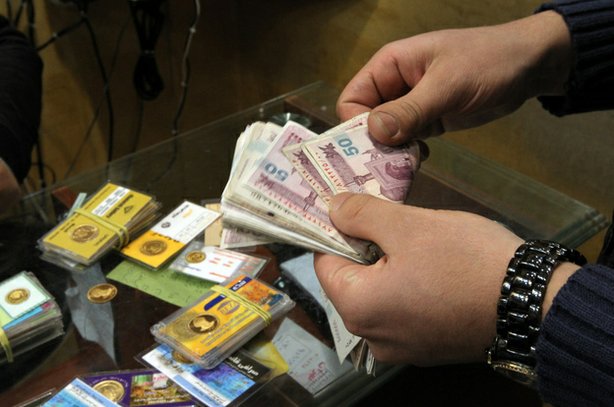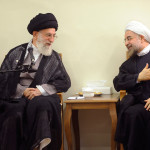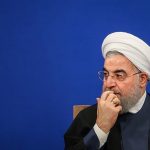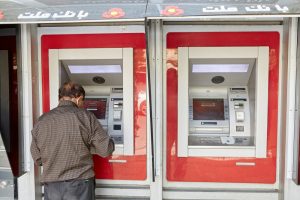by Djavad Salehi-Isfahani
The sharp drop in the value of the rial in the last two weeks has created much excitement in Iran and abroad, but mostly for the wrong reasons. In the parallel (or free) market for foreign currencies, the rial fell by 15% in one day this week, reaching its lowest value ever — 35,000 rials per US dollar — down by more than 50% compared to a month ago and 300% to last December when international sanctions tightened against Iran.
What all the related excitement overshadows is that this devaluation is not comparable to those in other countries where large devaluations caused severe shocks to the economy, such as those that swept through Asia in 1997-98. That’s because in those situations all prices were affected because all foreign exchange was traded at the same (rising) rate. This is not the case in Iran because nearly all foreign exchange is earned by the government, which has decided to sell most of it at a lower rate for the import of goods and services that it deems essential.
The rial devaluation that has created the media excitement is actually taking place in a narrow market that is shrinking in size and diminishing in importance. Iran’s Central Bank has classified a long list of goods into categories with priorities 1 through 10, leaving it to the parallel market to take of all other needs. Priorities 1 and 2 are food and medicine, receiving foreign exchange at the official rate of 12,260 rials per dollar, followed by other categories with lower priorities, which are mostly intermediate goods used in industrial production.
The government has been promising to do something for the import of these non-essential but important commodities, which account for about two-thirds of Iran’s imports, offering them some sort of preferential treatment. But the Central Bank was slow to respond and those producers who did not want to wait bought their currency needs in the parallel market, competing with speculators and people taking their money out of the country. The uncertainty about the sanctions, bewildering pronouncements from government officials in Iran, and hype over a possible Israeli attack, all combined to throw this market into chaos.
To protect Iran’s producers from what the government considers the consequences of “psychological war”, the Central Bank set up a “Currency Exchange Center” and invited licensed importers and exporters to trade their foreign currencies there, hoping that the auction rates reached there would be more stable and lower than the parallel market rate. When the Exchange Center opened just two weeks ago, the volume of transactions quickly jumped from $10 to $181 million per day, with most of the supply likely coming from the Central Bank. The Exchange Center diverted some of the supply of currency away from the parallel market, which I believe caused the rate there to soar.
Curiously, the Central Bank had predicted the opposite: that by arranging trade in the Exchange Center it would help lower the rate in the parallel market. This miscalculation added to the confusion and fear that the government did not know what it was doing. While the Exchange Center has produced a lower rate than the parallel market and can potentially shield producers from the worst psychological effects of sanctions and war, the shock to the parallel market has caused a serious political if not economic crisis for the government of Mr. Ahmadinejad.
Does all this mean that Iran’s economy is on the verge of collapse, as Israel’s Finance Minster reportedly said? The answer is no, because most of the economy is shielded from this exchange rate, though not from the ill effects of the sanctions, which will continue to bite for a while. Would it cause sufficient economic pain that would push the Iranian government to make concessions in its nuclear standoff with the West? The answer is not likely. The multiple exchange rate system, as inefficient as it is, will protect the people below the median income, to whom the Ahmadinejad government is most responsive.
But the government can ill afford to ignore millions of Iranians, mostly upper income Iranians, who are affected by the gyrations of the parallel market. Among them are millions of people who are seeking a safe place for their savings, parents who send money to their children for education abroad or need to travel there to see them. They are not all importers of luxury items or those who want to take their money out of Iran. In allocating its limited — perhaps shrinking supply of for foreign currency — the government has a difficult time balancing the needs of the lower middle class and the poor with those of upper income Iranians that it cannot rely on for political support.






Although Mr. Djavad Salehi-Isfahani has written persuasively about the Iranian economy in the past in his blog Tyranny of Numbers (http://djavad.wordpress.com/), I am not convinced about his dismissing of the current crisis. Mr. Salehi-Isfahani’s only provided reason why the economy is not on ‘the verge of collapse’ is his arguement that in societies that were on the verge of collapse, ‘all prices were affected because all foreign exchange is traded at the same (rising) rate.’ Although this is true about Iran, but Mr. Salehi-Isfahani should also show that the above quoted reason is sufficient and necessary for an economy to be on the verge of collapse.
Before i get to my final point, there should also be a correction in the article for ‘quickly jumped from $10 to $181 per day’, since volume of transaction seems very low, maybe these figures should have been quoted in millions?!
But I think the most important reason why I do not find Mr. Salehi-Isfahani’s argument convincing is that I am not seeing a clear explanation about why the current devaluation of Rial vs. Dollar has taken place, especially the one day drop of 15% and as noted by the author the 300% decline since December, notwithstanding of his earlier explanation in his blog in July 2012.
One gets a fleeting glimpse of Mr. Salehi-Isfahani’s contributing factors as ‘uncertainly about the sanctions, bewildering pronouncements from government officials in Iran, and hype over a possible Israeli attack’ as an explanation for the current steep decline of the value of Rial vs. Dollar. What about the rising liquidity of Rial in the Iranian society? (http://alef.ir/vdcewf8znjh8ppi.b9bj.html?167625#list)
What is perplexing is that while one understands that the demand for Dollar has increased sharply in the past few years, I mean where would all the stolen money from unbelievably large financial scandals (last one which put many culprits on public trial had netted about $3 Billion) end up?, one also asks why would not the government supply the market with the need to keep the prices stable when it has increased its foreign reserves by 50% in the last year ( Iran’s foreign reserves will be deployed against sanctions: CBI governor. Tehran Times, July 1, 2012. Retrieved July 11, 2012.)
Mr. Ahmadinejad who stole the elections in 2009 this week in a televised press conference admitted that one source of the current crisis has been reduction of oil exports by Iran, but I doubt the current crisis will go away simply by his suggestion that 22 people have been responsible for the current fluctuations of foreign exchange market.
I think the explanation is much more complex than either Mr. Salehi-Isfahani or Ahmadinejad would want us to believe.
I finish with one question from Mr. Salehi-Isfahani:
You mention that Iran’s source for foreign exchange is mainly government’s sale, I presume, of oil. Would you refer us to a source to see exactly how much is the share of the private sector to own foreign exchange, let’s say for example from the sale of Pistachios?
I am not an economist but I think what professor Salehi-Isfahani is saying makes perfect sense. How can the “value” of a currency suddenly falls by 15% in one day!! And I agree with Vakil-e-Roaya that something more complex is the cause of this situation. But this is the fact that ordinary Iranians are under tremendous financial pressure and unless the government does something fast to rectify the situation, it may easily go out of hand.
Here in Iran the general feeling is that things are spinning out of control. Price of galvanized steel tubes just jumped from 18,000 per kilo to 31,000 Rials per kilo within less than two months.
My guess is that the central reason for the huge jump in the price of the dollar is because of a lack of supply. Iran has billions stuck outside of Iran that it can not bring back into the country. China is holding onto 20 billion dollars for some unknown reason and not paying back to Iran.
And given the acceleration of inflation in Iran over the past few months people want to park their money into something that will generate a return or keep its value and that means land, gold, and dollars, and the latter is obviously the most attractive given its rate of increase. So it’s too many Rials chasing after too few dollars that is the main cause for the current crisis.
I would suggest that the Iranian government change its interest rate it grants to dollar bank accounts (currently 7.5%) to 16% and make this an investment opportunity to overseas investors, charging them only 5% on capital gains, which the freedom to withdraw their money within two years. This will create an inflow of dollars into Iranian banks and restore the Rial’s value. Would this work and can the government implement something like this quickly? I have no idea.
Dear Ararastou jan,
Thank you for forwarding Dr.Javad Salehi Isfahani’s article to me.In fact I have the honour of knowing the gentleman.
Dear Arastou jan,in fact I intend to subscribe to most of Dr.Salehi’s views regarding minor or so to say less than commonly believed adverse impact of Rial devaluation in Iran’s economy.
During early and mid-2000,Iran opted to buy very large quantity of gold and amassed volumes of foreign currencies notably the United States Dollar.Bank Markazi was instrumental but several of our ambassadors were quite active in physically transferring gold and currency to the country.Having said that those gold and currency remained intact during the micromanaged years of the current administration due to the fact that revenue earnings from oil export was already at its highest.
Now Iran has lost nearly half of its foreign revenues and Iran’s import bills per single volumes is inflated by some 30 per cent.This is a tremendous pressure on the country’s financial structure,but it is yet too early to believe that cracks have already surfaced in the economic structure
I intend to believe that Iranian politics is too perplexed and often cruel towards the nation.Mr.Mehdi Hashemi was quite busy this last week with his associates and advisers.However,Rial’s devaluation and rising value of Dollar is in the interest of both anti Ahmadi nejhad as well as pro Hasmemites.
Having said that I believe that international sanction has yet to penetrate deeper into the country’s economic inner texture.Iran’s embargo is a very expensive affair for sanction-imposing countries.According to a study by EU Parliament,Iran’s sanction has cost around $85 Billions in direct revenue to the European Union.Neither the US nor Israel are not compensating those losses.In fact EU is doing much to do business with Iran behind the scene and America’s Treasury Departments is aware of the fact.
However,what I wish to say in response to your question regarding Dr.Salehi Isfahani’s views on Rial falling values is that I am mostly supporting his views,but for now and by that I mean just for now and not for many months or years to come.That is why the issue of Resistive Economy is now on the table in Iran.
Best,
fereydoun
The core argument of Dr Salehi, that I think is a good economist but get this one wrong, is that the parallel exchange market doesn’t matter. This is exactly what Ahmadinejad says. If parallel exchange market doesn’t matter, then why they try so hard to shut it down? and why all the other prices, including the price in that center is designed to follow the price in the parallel market?